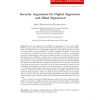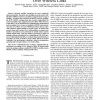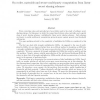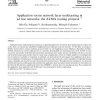154 search results - page 27 / 31 » Proving Group Protocols Secure Against Eavesdroppers |
TCC
2004
Springer
15 years 4 months ago
2004
Springer
Abstract. We present a general method to prove security properties of cryptographic protocols against active adversaries, when the messages exchanged by the honest parties are arbi...
105
click to vote
JOC
2000
14 years 11 months ago
2000
Abstract. Since the appearance of public-key cryptography in the seminal DiffieHellman paper, many new schemes have been proposed and many have been broken. Thus, the simple fact t...
109
click to vote
JSAC
2006
14 years 11 months ago
2006
Network mobility introduces far more complexity than host mobility. Therefore, host mobility protocols such as Mobile IPv6 (MIPv6) need to be extended to support this new type of m...
123
click to vote
CRYPTO
2005
Springer
15 years 4 months ago
2005
Springer
Error correcting codes and matroids have been widely used in the study of ordinary secret sharing schemes. In this paper, we study the connections between codes, matroids, and a s...
103
click to vote
ADHOC
2006
14 years 11 months ago
2006
Application layer multicasting has emerged as an appealing alternative to network layer multicasting in wireline networks. Here, we examine the suitability of application layer mu...




